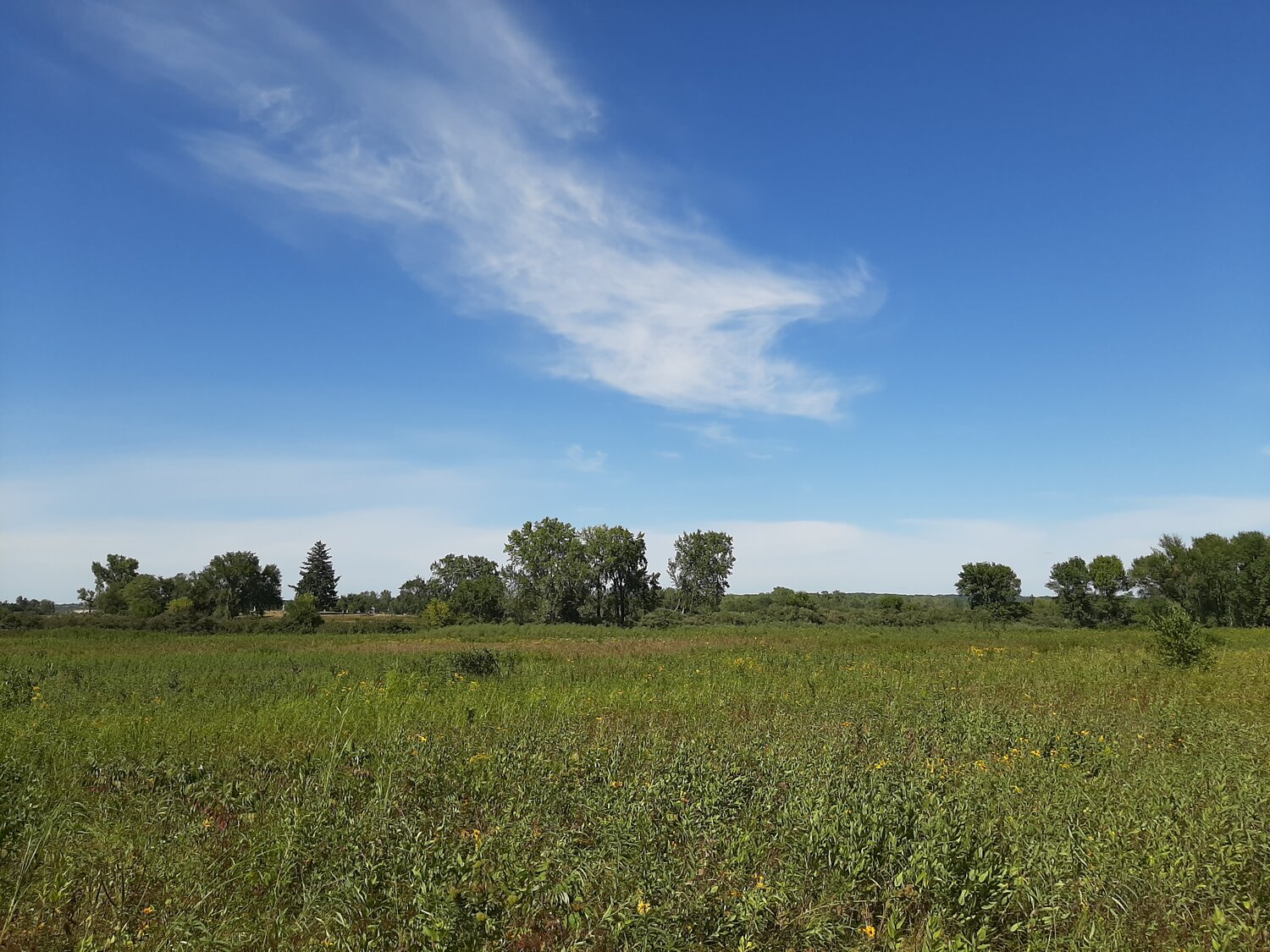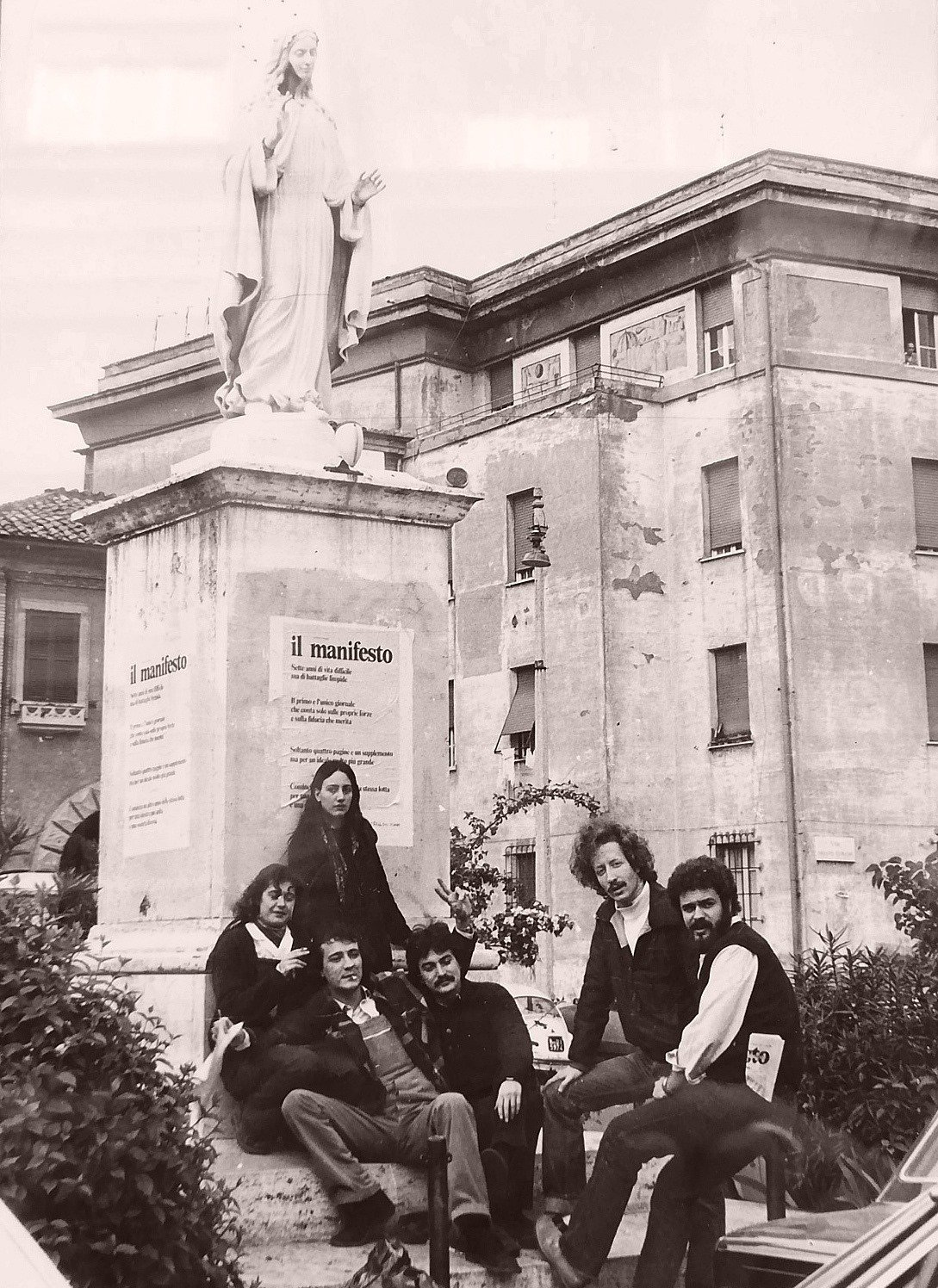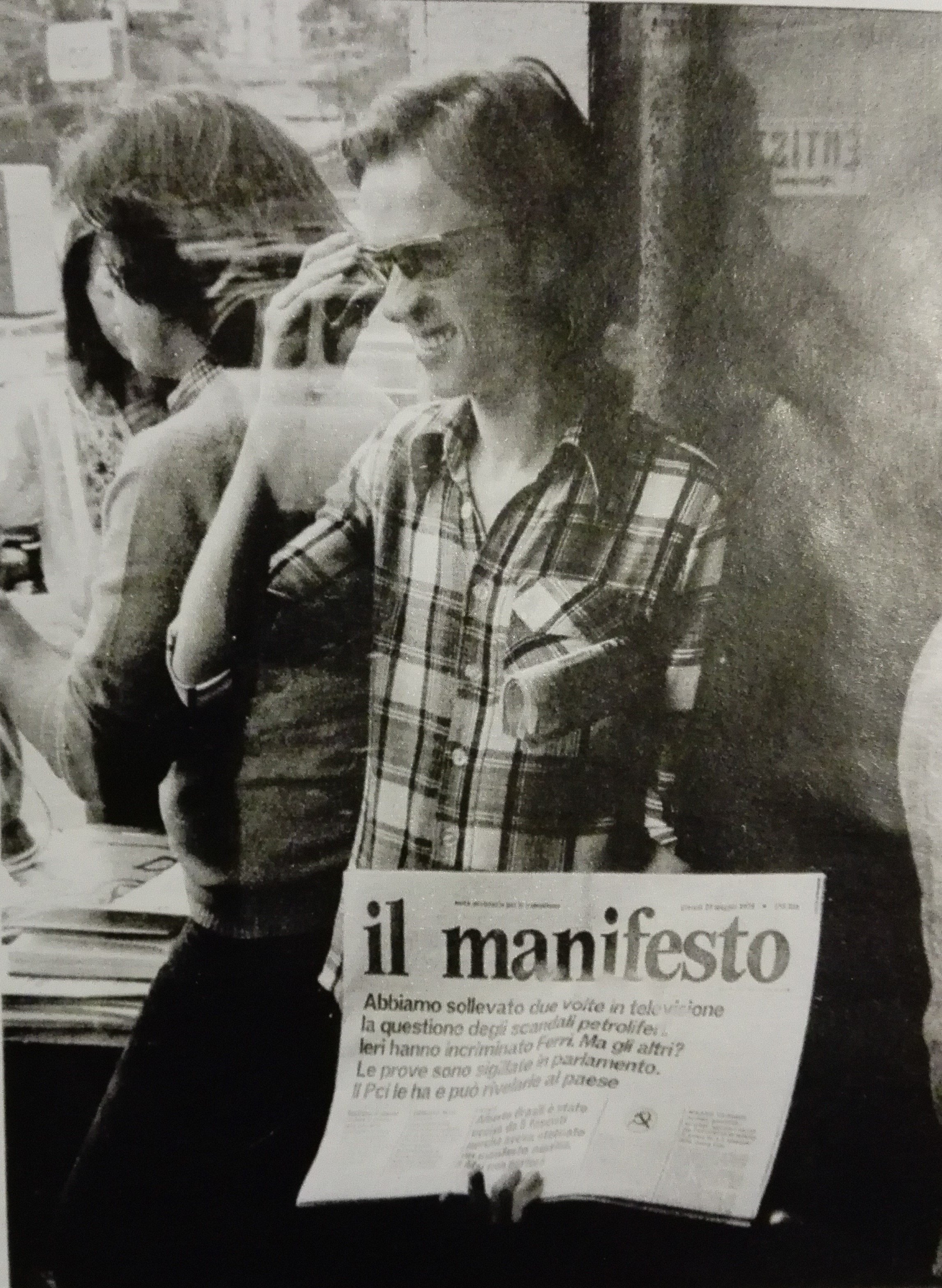Vagabonding in Europe: Le Avventure Italiane di Jim e David
Il Colosseo e l'Arco di Costantino a Roma (the setting of a film festival in the summer of 1981)
11 agosto 1981. That Monday morning Jim and I left Venezia – actually we left Camping Mestre, a short bus ride across the Via della Libertà bridge from Venezia. We’d cooked up a breakfast of scrambled eggs and veggies, scavenged a half-dozen packets of dried soup and a pound of rice from a vacated campsite, packed up our tent and gear, and headed for the Autostrada 57 pedaggio.[1]
Jim Prchlik has made numerous appearances in these stories. We both discovered Jack Kerouac’s writing in high school, and were attracted to his Beat vision of The Road as a venue for ecstatic joy and discovery. The summer after we graduated, before Jim started classes at the University of Michigan, we hitchhiked from Ohio to Cape Cod and back. Over the next nine years, our paths frequently intersected – his Ann Arbor home became my travel hub, a place to reenergize, a springboard to new journeys. Like me, Jim had been sandwiching semesters of school in between trips. Completely fluent in three languages, both adventurous and able to go with the flow, he had covered the entire Western Hemisphere, from the Trans Canadian Railway to Argentina.
By the time we met up that summer in Kassel, Germany, at the apartment of his friend Albert “Cruiser” Riesselmann, Jim had been vagabonding around Europe for a year and I’d been there for six weeks. We were now three weeks into our first trip together since that summer after high school. Jim had devised various strategies for extending his stay in Europe – the previous fall he’d worked the vendange[2] in France, this summer he was selling leather pouches he’d made from scraps scored for free. In addition, we reaped the benefits of tourists’ wastefulness and the high aesthetic standards of open-air markets by scavenging lots of fresh food.
That morning, we quickly hitched a ride to Bologna. As we climbed into the back of the step-van, we met another hitchhiker, Sergio, a university student from Roma. We immediately hit it off. When the van driver dropped us off at an area di servizio, Jim and I pulled out our food supplies and shared a lunch with Sergio, who in turn bought us espressos at a nearby bar. When we parted, Sergio gave us his phone number and encouraged us to visit him when we came to Roma. He continued southwest and homeward, and we headed southeast toward the Adriatic coast.
We caught a ride to Rimini from an Italian who spoke excellent English – he was a liaison interpreter between the American military police and Italian carabinieri. On first blush, Rimini was a crowded, boisterous beach resort, an Italian version of some Jersey Shore town. In Italy, everyone takes their vacation in the month of August – all the campgrounds were packed – but it took us a few bus rides and a good bit of walking to learn this. We headed downtown so Jim could try his hand at selling his leatherwork items. Rimini street life was noisy and garish, mostly Italian vacationers, with a sprinkling of French, Germans, and Brits, the kind of outlandish nouveau-riche characters who might appear in the background of a Fellini movie, which was an apt connection because, as I later learned, Fellini was born there.
Jim made no sales that day, but we did meet another street vendor, a young jeweler from Bologna, who offered tips on Italian beach towns farther south more laid-back than Rimini. We found folks camping on the spiaggia libera,[3] so we pitched our tent among them for the night. The beach was free to use but not to camp on, we learned the next morning when the police rousted us, but not before we’d enjoyed a hearty breakfast cooked over our campstove. We spent one more day in Rimini. After a storm blew through that evening, I pitched our tent in a field and waited for Jim to return from his street vending efforts. He came stumbling in, a bit tipsy from a half-bottle of wine he’d found and drank, bummed out by the polyester scene and lack of sales. I cheered him up with a dinner of rice mixed with a can of mushroom ragu found under a bridge while I’d been dodging the storm. We made a good traveling pair – the yang of Jim’s dynamic risk-taking balanced by the yin of my even-keeled care-taking.
Awakened by more rain the next morning, we caught a bus packed with heavy-lidded Italiani to the Rimini train station and then hiked to the autostrada pedaggio. We caught one short ride to the next area di servizio and then a 350-kilometer ride from Rosano, a soft-spoken Veneziano working in München as a fashion model, who was headed to Lecce, near the tip of Italy’s heel. We were tempted to go with him but resisted the impulse, wanting to reach Rome soon, where we hoped mail would be awaiting us. We asked Rosano to drop us off in Lesina, near the Promontorio del Gargano. We hiked ten kilometers out of town, past a couple of campgrounds, along a strand of beach separating the Mare Adriatico from the brackish Lago de Lesinà, on the northeastern edge of the Parco Nazionale del Gargano.[4] Once we found a secluded spot that would serve our need to chill for a few days, we returned to town to buy supplies – bread, wine, candles, matches, cigarettes – and lugged them and four liters of water back to our camp.
Our cigarette of choice at that time, a nonfilter Italian brand.
The next morning, we enjoyed a breakfast of hotcakes and coffee. Afterward, alone for a few minutes, I felt my body and mind go into one of the brief slow-motion fugue states I’d experienced off and on since I was a kid. I could feel each heartbeat, the blood rushing through my body, both helpless and hyperaware as I stepped out of myself and into the delicious intensity of each passing second.
We were writing, swimming, letting the sun tan our bodies a shade darker and bleach our hair a shade lighter. Reading the first volume of Anaïs Nin’s diaries, I was inspired by her writing to be precise and honest in my own journals. Gathering driftwood on the beach for our fires, I found ouzo bottles imprinted with Greek letters, a good black ink pen, the plastic leg of a babydoll that we mounted atop our tentpole, a kind of amulet. Sitting around our campfire, we watched a storm far out at sea, lightning reflecting off the water, a full moon hanging overhead. A bottle of wine, cigarettes, and good brotherly talk.
We camped four nights on that beach, staying until we had depleted our food supplies. Sunday morning, more good luck hitching the autostrada – north along the coast to Pescara, then west into the Abruzzo region and the dry western slopes of the Apennines. We stopped for lunch in sleepy little Pescina, the midday sun intense but the air comfortably arid as we rested on a stone wall beneath the shade of the piazza’s only tree. We got a ride to the last area di servizio before Rome, where we hoped to call Sergio, but all the phones were out of order, so we camped in an adjacent field.
Early Monday we hustled up a ride to the outskirts of the city, caught a bus al centro and walked to an American Express office near the Piazza di Spagna, where a letter from Pat and three others were awaiting me. We drank espressos at an outdoor cafe, read our mail, felt the rush of connecting with lives back home, and promptly wrote responses. Rome was the first address I’d given Pat to reach me, and her letter was an eight-page outpouring of her and Sierra’s feelings for me: “I find myself becoming selfish sometimes, wanting you to come home. But I want this trip to be special for you. And I want you to want to come home to me when it’s done.”
By two that afternoon, we were ringing Sergio, who responded warmly and gave us directions to his apartment in the Monte Sacro quarter. We arrived in time for the final course of a long leisurely lunch – dolce i caffè. Sergio welcomed us, introducing us to a group of friends snugly gathered around a long table in his kitchen – Gianni, Roberta, Grazia, Gino, Jordi, Valeria, Natalia, Ana, Marco. We filled our stomachs and heads with good things. That evening, refreshed by our first hot shower in weeks, we joined the group to catch a movie at the Maxentius Film Festival, some American western dubbed in Serbian with Arabic subtitles, projected simultaneously onto four screens in the open space between Il Colosseo and the Arco di Costantino. A wondrously jarring experience – watching a movie and then turning to notice the walls of a structure that has withstood two thousand years of history.[5]
Left, Sergio’s friends sitting under La Madonnina in Piazza Sempione, the central square of Mante Sacro (photo taken in the late ‘70s). Right, Sergio hawking the left-wing Rome daily Il Manifesto (photo taken in 1974-75).
We stayed a week with Sergio, who had opened his house to not only us but also Roberta, Jordi, and Gianni during their August break from studies. I grew to appreciate the style of our amici italian – their generosity and natural intimacy, the abundance of kisses and embraces shared every time we met or parted. One evening, a group of us gathered in a quiet bar on the Isola Tiberina, in the middle of il Fiume Tevere in the middle of the city. For hours, we drank beer and discoursed on art and politics, conducting the melodious words with our hands.[6] As Gianni said, “How else to act with that much history resting on your shoulders.” Our group relocated to Massenzio, where films played all night, free after midnight. A spina was fired up and passed around, and we danced loose and crazy to a Bob Marley concert movie. By 3 a.m. Sergio was driving us homeward through the empty streets, the spotlit buildings, monuments, and ruins whizzing past like a dream.
Tuesday afternoon, Roberta took me shopping for a new pair of shoes. I was looking for a pair of espadrilles like the ones worn by many young Italians. They looked so comfortable, just canvas and jute with rubber soles, but I struggled to find a pair that fit my size 45 feet, so I settled on a simple pair of sandals. The best part of the shopping trip, though, was Sergio letting us use his Fiat and Roberta letting me drive it through the streets of Roma. Ah, the thrill of merging into the roundabout encircling the gorgeous fountain-filled Piazza della Repubblica.
On Wednesday, we made dinner for our friends. Gianni took us shopping for supplies. I delighted in the many stops we made at shops and stalls in the open-air market, la lingua del mercato, red and green peppers bursting with dolcezza, aromatic garlands di aglio, black olives swimming in barrels of olio d’oliva, pomodori San Marzano, grown on the volcanic soil of Vesuvius.[7] I made a frijoles con queso casserole with cornbread crust.[8] While Jim and I were out earlier that day, he discovered a sizable chunk of hash in a Piazza Navona trash can – perhaps intercepting a drop or salvaging what some nervous lad fearful of being busted had jettisoned. In any case, he donated it to the communal stash.
Thursday afternoon, Grazia and her sister Analisa took Jim and me to the countryside northeast of Roma. Grazia and Jim had made a good connection and spent the previous night together. She was fun and likable – a vivacious bundle of energy and fiercely held opinions. We went for a swim in Lago di Bracciano, and then lazed in the last hour of sunshine. In nearby Trevignano, we met up with Gianni, Jordi, and Roberta, drank beers, went off to smoke a spina, and reconvened at a trattoria where we were served massive plates of pasta at a long outdoor table. Later, we drove to a villa owned by Roberta’s family, a rustic farmhouse set against a terraced hillside and surrounded by a courtyard garden. Under the stars we shared another joint of hash and talked feminist and Marxist politics until I wandered off to a bed of straw in a grape arbor, the fruit hanging overhead like the eggs of Bacchus. My thoughts turned to Pat and Sierra. How I missed the rich entanglements of our home life. But oh, how I cherished the constant novelty of this vagabond life.
On Saturday, we bid a heartfelt farewell to Sergio.[9] Grazia hosted us at her house for a last lunch. We met her mother, equally attractive and lively, and then helped Grazia prepare a tasty pasta dish with plum tomatoes, mozzarella, fresh parsley and basil. We enjoyed that with a salad and a bright chilled Tocai from the Veneto region, prolonging our meal and delaying our parting with un bicchiere di vino santo[10] and an espresso. By midafternoon, Grazia was dropping us off at the nearest Autostrada 90 area di servizio. More kisses and hugs goodbye. So we left Rome and, by nightfall, landed in Perugia.
Footnotes:
[1] Highway 57 tollbooth. The Italian national highways are toll roads.
[2] The grape harvest.
[3] Free public beach.
[4] We had entered Puglia, a region in the Mezzogiorno, literally the sunny, sultry “midday” of Southern Italy, the more rural, less industrial, and hence, poorer part of the country.
[5] Thanks to the Roman technique of hot mixing lime, volcanic ash, and sand aggregate, which resulted in an amazingly durable concrete.
[6] We talked about an anti-terrorism conference held two weeks earlier, a gathering of artists, musicians, and poets on the first anniversary of the neo-fascist bombing of a Bologna railway station that left 85 dead and 200 wounded.
[7] The language of the market … bursting with sweetness … garlands of garlic … barrels of olive oil … San Marzano plum tomatoes.
[8] Drawing upon my memory of Mollie Katzen’s recipe from her The Enchanted Broccoli Forest cookbook.
[9] I was fortunate to reconnect recently with Sergio Cesaratto, an author and professor of economics at the Università degli Studi di Siena.
[10] Literally, a glass of holy wine. A sweet dessert wine from Tuscany.




